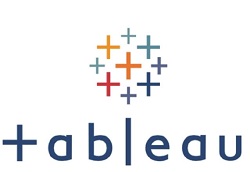Actions to Protect against Brute Force attacks

INTRODUCTION
As an Organization or as an Individual PC user, have you ever had compromised on network security and the entire system was hacked? Ever wondered what are the methods used by the intruder to steal your information? Well, there are many ways to break-in into your system’s network and one of the many methods is Cryptanalytic method or Dictionary attack or it is called the Brute Force attack.
METHOD USED IN HACKING and EFFECTS
This Brute force attack is a method in cryptography, to hack the system by using several combinations of passwords or passphrases or PINs. The intruder uses several techniques which involve guessing of the commonly used phrases or passwords. For this, they take a set of alphabets and numbers till the desired combination of passcode is met. Hence, the name dictionary attack has come. Alternately, the hacker can use the Data Encryption Standard (DES) key which is typically created from the password. The hackers also can use this method to decrypt the encrypted data.
HOW IT IS DONE
The technique or algorithms used to achieve is by using Brute-force search or exhaustive search. Brute force attack would likely start with one-digit passwords, before moving to two-digit passwords and so on. The Brute force is a straightforward strategy to solving a problem generally iterating through all possible solutions are found. The hacker can also you certain software platforms like Crack, Hashcat, Rainbowcrack, Aircracking, etc., to generate possible keys and apply it to the targeted system. It has been noticed that the most successful techniques used to crack passwords nowadays include rules that were compiled from the analysis of great volumes of actual passwords.
MEASURES to BLOCK BRUTE FORCE ATTACK
We can combat with this attack and secure our systems and passwords by taking measures like: Locking the account –
If a user attempts a wrong password many times then the user's account will be blocked for a given time of period. Outlook accounts are locked after a wrong password tries. If an attacker attempts a Brute Force Attack on many accounts then a Denial of Services (DOS) problem emerges. If attackers want to lock an account then they continues to hit that account and the resultant admin is again locked from the account.
Delay the login process –
Increase the time delay for logging-in to stop brute-forcing. More attempts a hacker uses to guess a password, more time does it take to check every time by increasing the CPU Cycles.
Block the Hacker’s IP –
Simply block the IP address where the brute force attack comes. Some companies avoid using this way because sometimes a user might forget his password and tries to login several times. Website administrators may prevent a particular IP address from trying more than a predetermined number of password attempts against any account on the site.
Password complexity-
Increase the complexity of the passwords by using lengthy passwords, adding CAPTCHA code, verification code or PIN.
Reverse Brute-force attack-
It is a protective measure, where a single, commonly used password is taken and tested on multiple usernames or encrypted file. The process is repeated for the selected passwords and thus establishing a password policy that disallows common passwords.
 Betty
13th October 2025
Betty
13th October 2025
This breakdown of brute force tactics is spot on, from dictionary rules to tools like Hashcat and Rainbowcrack. The account lockout caution is real Level Devil of tradeoffs when DOS risks emerge. I once faced a spree of credential stuffing on a small SaaS; rate limiting and adaptive MFA saved the day fast.
The way hackers use tools like Hashcat reminds me of a puzzle, or even a Connections Game, where every possible combination has to be tested to find the solution. I once faced a similar issue while managing a website; repeated login attempts from unknown sources made me implement IP blocking and CAPTCHA, just as suggested here. Great checklist of protective measures!
 Lucille
22nd August 2025
Lucille
22nd August 2025
The way hackers relentlessly try every possible password reminds me of how persistent digital threats are today. Once, I actually faced a brute force attack on my own email—waking up to dozens of login alerts was chilling. Thanks to reading about tools like Hashcat and getting tips from Slice Master, I bolstered my defenses and started using stronger, unique passwords everywhere.
 Jim
11th August 2025
Jim
11th August 2025
You’re playing, not being forced to play—that feeling makes this puzzle game relaxing and meditative. Every challenge feels natural, not forced contexto.
 Guy
9th May 2025
Guy
9th May 2025
I remember once dealing with a brute force attack on my personal email, and it was both stressful and eye-opening. It really made me value strong passwords and two-factor authentication. Now, I regularly update my passwords and use a password manager. For anyone looking for a quick brain break after reading security articles like this, I recommend trying out Slope Game — it’s a fun way to relax and reset your mind!
 Tamara
7th May 2025
Tamara
7th May 2025
This is a helpful overview of brute-force attacks and how to defend against them. It's a good reminder that password complexity and account lockout policies are essential. Thinking about these security measures sometimes feels like a cat-and-mouse game, a little like the strategy you might find in something like Funny Shooter 2 , where you're constantly trying to outsmart your opponent.
 Nguyen
23rd January 2025
Nguyen
23rd January 2025
68 game bài have games to suit every player when playing Casino Online. Not only do we have hundreds of Casino games, we also offer many bonuses and promotions to our members. Readmore: 68gb
 Nguyen
1st January 2025
Nguyen
1st January 2025
Bạn Ä‘ã biết cách tham gia và tăng cÆ¡ há»™i trúng thưởng chÆ°a? Cùng Dá»± Ä‘oán Xổ sôÌ Tây Ninh khám phá ngay những bí quyết thú vị! xổ sôÌ Tây Ninh
 Nguyen
1st January 2025
Nguyen
1st January 2025
Bạn Ä‘ã biết cách tham gia và tăng cÆ¡ há»™i trúng thưởng chÆ°a? Cùng Dá»± Ä‘oán Xổ sôÌ CâÌ€n ThÆ¡ khám phá ngay những bí quyết thú vị! xổ sôÌ CâÌ€n ThÆ¡
 Nguyen
14th December 2024
Nguyen
14th December 2024
Kết quả trúng thưởng Xổ Số An Giang được xác định bằng cách Ä‘em so sánh dãy số trong tá» vé số vá»›i kết quả mở thưởng của nhà Ä‘ài. xổ sôÌ an giang
 Nguyen
14th December 2024
Nguyen
14th December 2024
có không ít ngÆ°á»i vẫn chÆ°a biết cách chÆ¡i XSTN. Váºy hãy cùng Dá»± Ä‘oán xổ số An Giang tìm hiểu cách chÆ¡i và kinh nghiệm tăng khả năng trúng thưởng nhé xổ sôÌ an giang
 Nathan
4th December 2024
Nathan
4th December 2024
The content stands out because it’s not just theoretical. The author shows how the topic can make a tangible difference in everyday life
dq prices
 Deshawn
1st December 2024
Deshawn
1st December 2024
The author’s ability to spark interest ensures readers will explore the topic further beyond the blog.
wendys menus
 Nguyen
30th October 2024
Nguyen
30th October 2024
have games to suit every player when playing Game Online. Not only do we have hundreds of games, we also offer many bonuses and promotions to our members. ce88
Please rotate your device
We don't support landscape mode on your device. Please rotate to portrait mode for the best view of our site





